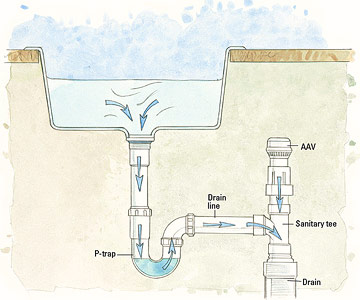Building a sustainable building envelope is easy…until you add in openings. Wouldn’t it be nice to be able to make efficient building envelopes in a snap? But that’s not how life works. We need doors and windows and vents and openings in order for a building to function. So, alas, we have to deal with holes in the building envelope that complicate our lives, especially when we’re working to build with Passive House practices in mind. But with each hole we make in a building, we need to pay attention to ensure there is minimal air infiltration.
Why Should You Care?
Every hole in a building envelope is an area of extreme complexity. It becomes an area where you have to focus structural attention to ensure that it functions properly, but it also becomes a juncture for energy (heat) and air to escape. When it comes to Passive Home tactics, we care about this a lot because these junctures are usually where most of our inefficiencies come into play. Therefore, we need to make sure we pay special attention to these areas to ensure that we can maintain an efficient, effective structure.
We don’t care just for the sake of being more efficient, but also because if not done correctly, it can lead to future problems. Thermal bridging can occur when openings are not managed properly, causing condensation, warping, and other long-term effects that can damage a structure.
Top Culprits for Air Infiltration Issues:
[And What You Can Do!]
Bath Vents:
Bath vents are often overlooked and forgotten about as they serve an important, but often invisible role. The mix of moisture management from showers, coupled with the fact that it’s a hole to the exterior elements, means this can be a significant energy loss location.
For a more Passive House approach consider using:
- An ERV for bath ventilation instead of bath fans.
- The CERV2 to evacuate bathroom air with booster switches.
Dryer Vents:
Clothes dryer vents are another big culprit when it comes to air infiltration and inefficiencies. This necessary vent can cause some major issues considering the appliance is often NOT in use.
For a more efficient approach:
- Use a condensing dryer instead of a traditional vented dryer. Never heard of them? You can get a good explanation of this approach to drying clothes and how it differs from traditional vented dryers here.
- Install a CERV2 to pull air from a drying closet, making for a more efficiently managed venting system.
Range Hoods:
Another big spot where air quality can get iffy inside the home is in the kitchen around the range. Gases and toxins in the air from cooking can be harmful if left to linger in the home, so proper ventilation is vital.
For a Passive House Approach:
- Leverage the CERV2 and ducted range hoods to help evacuate air from the kitchen.
Lights:
We don’t always think about lights being an air infiltration trouble spot, but lights can be openings in the envelope where air can leak.
For a more efficient option:
- Use LED puck lights instead of traditional (leaky) can lights.
- Choose air-tight can lights whenever can lights are absolutely necessary.
Plumbing Stack Hole:
When we think of plumbing, we think of water not air, but the plumbing stack can be a huge culprit for air infiltration. The venting holes, usually in the roof, require flashing and regular maintenance to ensure they are not leaking. Since they’re on the roof, it’s not uncommon for debris to clog these, causing more air quality issues and lack of actual venting.
For a Passive House Solution Instead:
- Consider using Studor Vents, or Air Admittance Valves (AAV)
What else can you do?
It’s impossible to avoid having some holes in your building envelope. So wherever you have openings, it’s vital that you have focused attention to how the openings are constructed. Bring in expert opinions on Passive House Construction to see where you have opportunities (Like the CERV2, for example) to be more efficient and smart in your systems. Another important step you can include in the construction is using SIGA Tape for high-quality air sealing.
Ultimately, the best approach to managing air infiltration at openings and holes is with a proactive approach. The more legwork you do up front, the fewer surprises down the road and the more efficient your building envelope will be. If you’re working toward a Passive House design, focusing on air infiltration is an important item that needs to be on your checklist. We’re here to help on your next project. Make sure to hit up our team to see how you can improve the air quality in your upcoming Passive House project!


